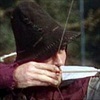Going To Australia? Better Keep An Eye Out For These 10 Guys!
Sep 6, 2014 12:43:40 #
10 Australian Animals That Will Probably Kill You
Saltwater Crocodile
The saltwater crocodile is extremely aggressive. Almost every year, 1 to 2 people perish due to a saltwater crocodile attack in Australia. These reptiles are between 14 -17 feet long and can easily reach upwards of 2,000 pounds. There are between 100,000 - 200,000 saltwater crocodiles in Australia. The "salties" as the Aussies call them, are the biggest and most dangerous of all the species of crocodiles; all crocs are capable of moving with incredible speed when they need to attack something; never go swimming in any place other than a swimming pool in Australia
Tiger Shark
As of 2014, Australia has the second highest rank of shark attacks in the world. The tiger shark, which spends a lot of time in shallow waters, commonly attacks humans near reefs and canals. The tiger shark is a skilled predator and has the ability to quickly reach its prey in bursts. Almost all sharks are very quick when they need to be, and tiger sharks are one of the quickest. Also, you don't have to be in Australia to get attacked by a tiger shark; they can be found in many places around the world.
Dingoes
Dingoes are wild dogs that live on the continent of Australia. Dingoes don't typically attack humans, but they are able to inflict serious bite wounds. Dingoes commonly attack when they feel threatened or when humans come too close to their food source. Give dingoes a wide berth.
Cone Shells
Cone shells may not appear dangerous, but it is not the exterior that is worrisome. These snails contain a venom gland that is particularly troublesome for humans when have been stabbed. These attractive univalve molluscs are highly valued by shell collectors. They usually grow to around 10 cm in length and have very distinguished colors and patterns on their shells. Geographer cone; At the narrow end of the shell they have an extendable proboscis. Using this proboscis they can jab a minute harpoon with 1 to 20 radular teeth penetrating the skin to inject venom to immobilize their victim. There are a lot of cone snails around Florida, but most of them have toxin that isn't nearly as lethal as some of the South Pacific species of cones. Regardless of species....never attempt to pick up or handle a live cone snail.
Box Jellyfish
People feel the effects of the box jellyfish a while after the actual sting. Sometimes people don't even realize it because the jellyfish appear transparent in the water. In some cases, the toxins from the sting cause a rise in blood pressure or the heart to stop completely. The venom from the box jellyfish is said to be the fastest acting of all toxins.
Irukandji
The Irukandji jellyfish, found in North Australia, delivers its venomous sting by shooting its stinger into a victim. Those who receive a sting from this toxic jellyfish develop Irukandji syndrome. This translates to an increase in blood pressure, heart rate, and pain that can last for weeks. Probably the worst thing about these tiny little creatures is the difficulty of even seeing them because of their small size. Marine researchers regard the irukandji as having the deadliest of all toxins. (Thank goodness the creature is only 1 cm in size! )
Sydney Funnel Web Spider
The funnel web spider is the most dangerous spider in the world. Resembling a tarantula, this spider has large fangs and a massive black abdomen. The severity of their bite depends on whether or not a person has an allergy. One in six people do have an allergy to the spider, so it is important to seek medical attention immediately if bitten. Funnel web spiders are very common in Australia, and generally aren't as fearful of humans as most species of spiders are; their venom is extremely toxic and due to their large size, they're likely to inject a massive dose with a single bite.
Redback Spiders
The redback spider closely resembles the black widow spider in the United States, and is in fact a very close relative of the black widow. In Australia, up to 2,000 people receive a bite from this spider each year. Symptoms from a bite include burning around the bite site and severe pain for up to 24 hours.
Blue-Ringed Octopus
The blue-ringed octopus is a particularly dangerous sea creature because its sting has the ability to kill humans and there is no anti-venom available on the market. Their venom causes heart failure, respiratory distress, blindness, and paralysis. Treatment is continuous until the venom has dissipated. This involves putting pressure on the wound and artificial respiration. The best way to avoid being bitten by this creature is to stay out of salt water all together.
Inland Taipan
Snakes are abundant on the continent of Australia. The inland taipan is particularly dangerous due to its venomous bite and its quick strike. The severity depends on how much venom entered the skin during the attack. If untreated, the lethality rate is over 80 percent. In Australia, any time you encounter any snake, the chances of it being a venomous species is about 85%; And of all the many venomous species in Australia, 4 or 5 of them are among the deadliest of all the world's snakes, and the inland taipan is at the top of the list for several reasons; besides having one of the most lethal venoms of all of Australia's snakes, the taipan is also the largest, and by far the most aggressive venomous snake in Australia; If You're in Australia and you ever see a taipan, my best advice is to run like hell!
Saltwater Crocodile
The saltwater crocodile is extremely aggressive. Almost every year, 1 to 2 people perish due to a saltwater crocodile attack in Australia. These reptiles are between 14 -17 feet long and can easily reach upwards of 2,000 pounds. There are between 100,000 - 200,000 saltwater crocodiles in Australia. The "salties" as the Aussies call them, are the biggest and most dangerous of all the species of crocodiles; all crocs are capable of moving with incredible speed when they need to attack something; never go swimming in any place other than a swimming pool in Australia
Tiger Shark
As of 2014, Australia has the second highest rank of shark attacks in the world. The tiger shark, which spends a lot of time in shallow waters, commonly attacks humans near reefs and canals. The tiger shark is a skilled predator and has the ability to quickly reach its prey in bursts. Almost all sharks are very quick when they need to be, and tiger sharks are one of the quickest. Also, you don't have to be in Australia to get attacked by a tiger shark; they can be found in many places around the world.
Dingoes
Dingoes are wild dogs that live on the continent of Australia. Dingoes don't typically attack humans, but they are able to inflict serious bite wounds. Dingoes commonly attack when they feel threatened or when humans come too close to their food source. Give dingoes a wide berth.
Cone Shells
Cone shells may not appear dangerous, but it is not the exterior that is worrisome. These snails contain a venom gland that is particularly troublesome for humans when have been stabbed. These attractive univalve molluscs are highly valued by shell collectors. They usually grow to around 10 cm in length and have very distinguished colors and patterns on their shells. Geographer cone; At the narrow end of the shell they have an extendable proboscis. Using this proboscis they can jab a minute harpoon with 1 to 20 radular teeth penetrating the skin to inject venom to immobilize their victim. There are a lot of cone snails around Florida, but most of them have toxin that isn't nearly as lethal as some of the South Pacific species of cones. Regardless of species....never attempt to pick up or handle a live cone snail.
Box Jellyfish
People feel the effects of the box jellyfish a while after the actual sting. Sometimes people don't even realize it because the jellyfish appear transparent in the water. In some cases, the toxins from the sting cause a rise in blood pressure or the heart to stop completely. The venom from the box jellyfish is said to be the fastest acting of all toxins.
Irukandji
The Irukandji jellyfish, found in North Australia, delivers its venomous sting by shooting its stinger into a victim. Those who receive a sting from this toxic jellyfish develop Irukandji syndrome. This translates to an increase in blood pressure, heart rate, and pain that can last for weeks. Probably the worst thing about these tiny little creatures is the difficulty of even seeing them because of their small size. Marine researchers regard the irukandji as having the deadliest of all toxins. (Thank goodness the creature is only 1 cm in size! )
Sydney Funnel Web Spider
The funnel web spider is the most dangerous spider in the world. Resembling a tarantula, this spider has large fangs and a massive black abdomen. The severity of their bite depends on whether or not a person has an allergy. One in six people do have an allergy to the spider, so it is important to seek medical attention immediately if bitten. Funnel web spiders are very common in Australia, and generally aren't as fearful of humans as most species of spiders are; their venom is extremely toxic and due to their large size, they're likely to inject a massive dose with a single bite.
Redback Spiders
The redback spider closely resembles the black widow spider in the United States, and is in fact a very close relative of the black widow. In Australia, up to 2,000 people receive a bite from this spider each year. Symptoms from a bite include burning around the bite site and severe pain for up to 24 hours.
Blue-Ringed Octopus
The blue-ringed octopus is a particularly dangerous sea creature because its sting has the ability to kill humans and there is no anti-venom available on the market. Their venom causes heart failure, respiratory distress, blindness, and paralysis. Treatment is continuous until the venom has dissipated. This involves putting pressure on the wound and artificial respiration. The best way to avoid being bitten by this creature is to stay out of salt water all together.
Inland Taipan
Snakes are abundant on the continent of Australia. The inland taipan is particularly dangerous due to its venomous bite and its quick strike. The severity depends on how much venom entered the skin during the attack. If untreated, the lethality rate is over 80 percent. In Australia, any time you encounter any snake, the chances of it being a venomous species is about 85%; And of all the many venomous species in Australia, 4 or 5 of them are among the deadliest of all the world's snakes, and the inland taipan is at the top of the list for several reasons; besides having one of the most lethal venoms of all of Australia's snakes, the taipan is also the largest, and by far the most aggressive venomous snake in Australia; If You're in Australia and you ever see a taipan, my best advice is to run like hell!
Saltwater Crocodile
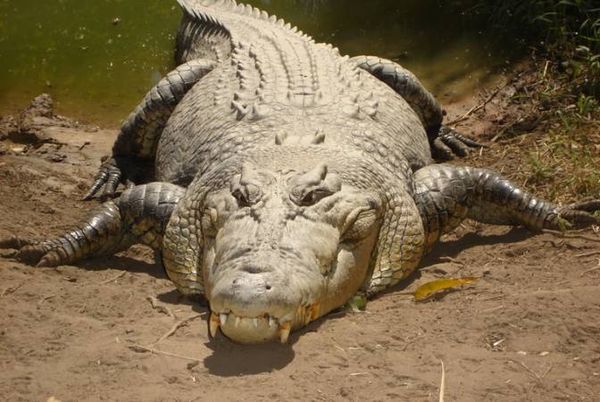
Tiger Shark
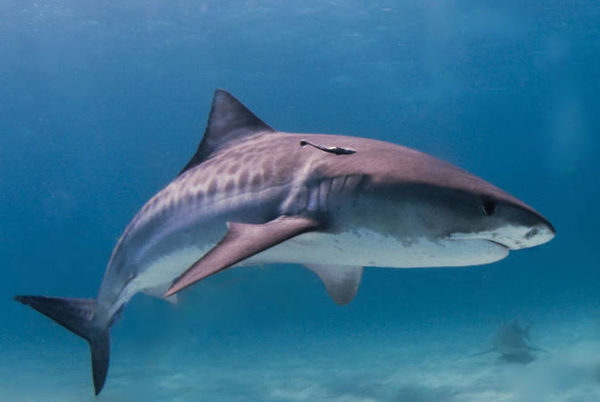
Cone Snail
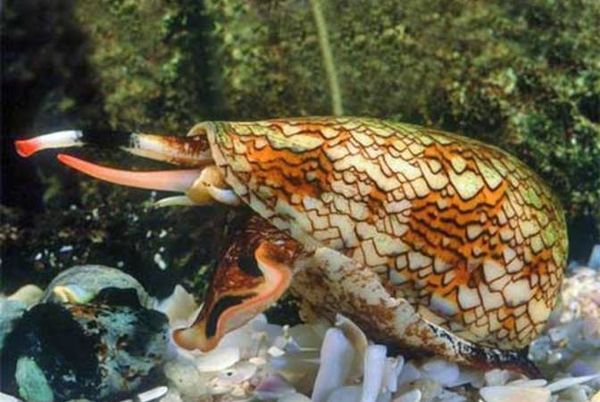
Irukandji Jellyfish
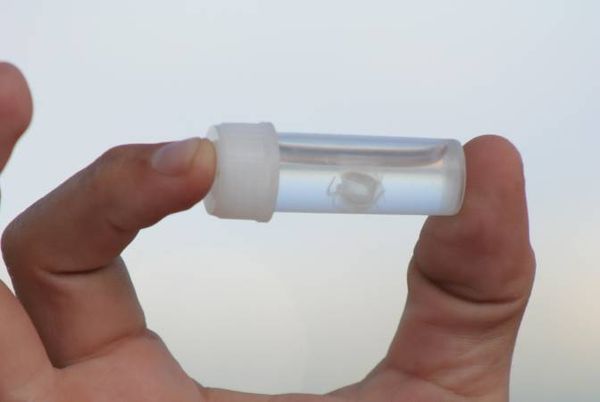
Funnel Web Spider
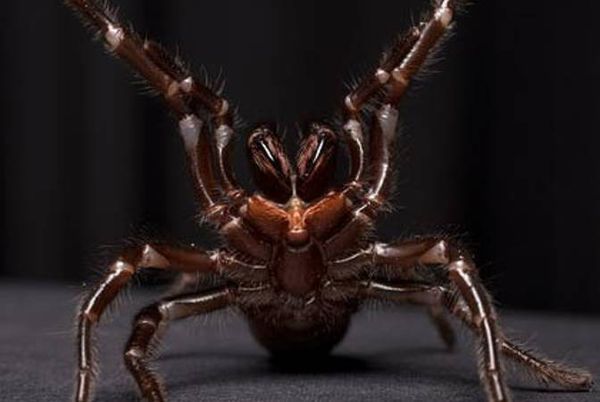
Box Jellyfish
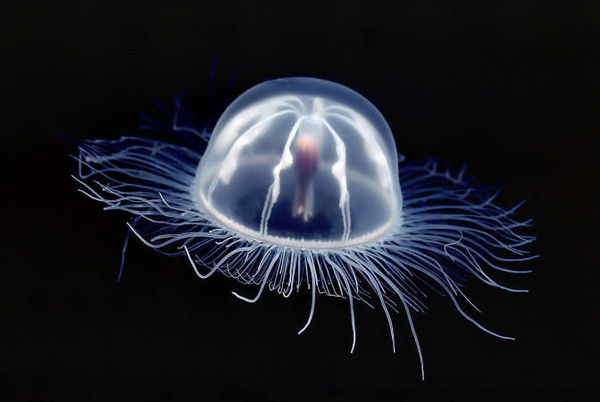
Redback Spider
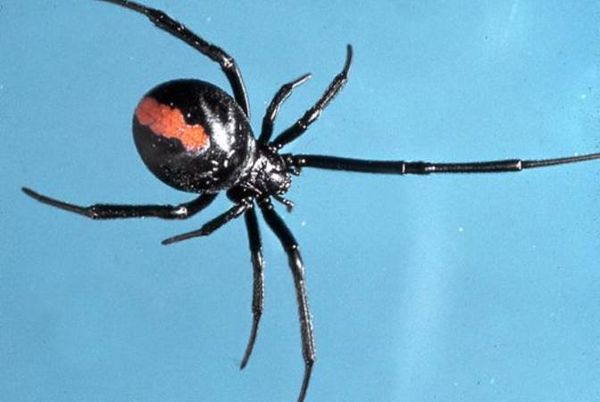
Blue Ringed Octopus
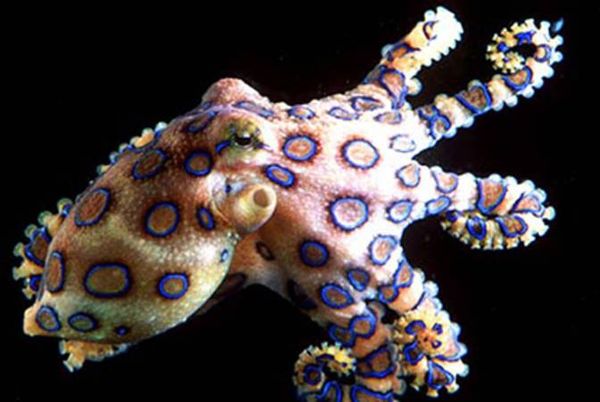
Inland Taipan Snake
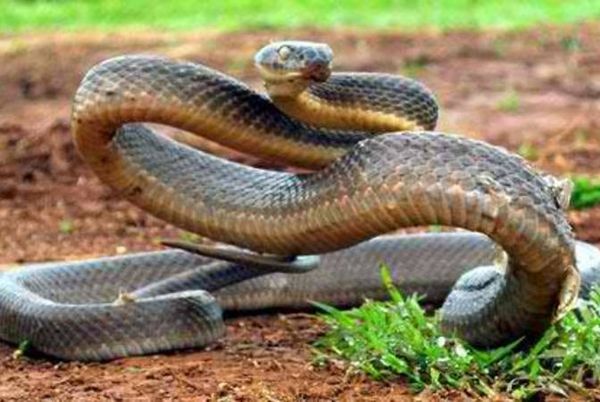
Sep 7, 2014 13:39:45 #
jjwright71
Loc: Lubbock,Tx
damn canceled my airline tickets to austrailia today ,i aint going ,just gonna stay here with black widow s rattlesnakes brown recluse,and centipedes(and sand storms ),HAR!
Sep 7, 2014 18:38:37 #
While they are certainly here, the chances of ever even seeing any of these is very, no extremely unlikely...
I'm an Aussie and apart from the odd red back, I've never seen any of them in the wild except for the odd Salty but only then when on a short wildlife cruise in remote mangrove swamps and areas...
As for the Taipans, only ever seen them in zoos or reptile parks...
So, please visit us...
:D
I'm an Aussie and apart from the odd red back, I've never seen any of them in the wild except for the odd Salty but only then when on a short wildlife cruise in remote mangrove swamps and areas...
As for the Taipans, only ever seen them in zoos or reptile parks...
So, please visit us...
:D
Sep 7, 2014 18:41:50 #
Gitzo wrote:
10 Australian Animals That Will Probably Kill You
Saltwater Crocodile
The saltwater crocodile is extremely aggressive........
Saltwater Crocodile
The saltwater crocodile is extremely aggressive........
True, but they have great beer :-D
Bill
Sep 7, 2014 20:26:29 #
SX2002 wrote:
While they are certainly here, the chances of ever even seeing any of these is very, no extremely unlikely...
I'm an Aussie and apart from the odd red back, I've never seen any of them in the wild except for the odd Salty but only then when on a short wildlife cruise in remote mangrove swamps and areas...
As for the Taipans, only ever seen them in zoos or reptile parks...
So, please visit us...
:D
I'm an Aussie and apart from the odd red back, I've never seen any of them in the wild except for the odd Salty but only then when on a short wildlife cruise in remote mangrove swamps and areas...
As for the Taipans, only ever seen them in zoos or reptile parks...
So, please visit us...
:D
SX2002;
Even though I have never in the southern hemisphere, much less to Australia, I have been studying reptiles and marine life for most of my life now. The one snake in Australia that is probably far more likely for a tourist to ever come in contact with, and is quite common over a far greater range than the taipan, is the very common Australian brown snake. The brown snake's venom is only slightly less in toxicity than that of the taipan; even though the browns don't attain near the size of the much larger taipan, they are far more likely to come in contact with humans than any of the other venomous species of snakes found in Australia, so overall, if it was the intent of the original author of this list to warn tourists about the dangers known to exist in Australia, I'm guessing that the brown snake should probably be considered the bigger threat of the two simply because of it's never ending search for mice and rats, and as we all know, mice and rats frequently come into inhabited dwellings, and the brown snake is the one highly venomous species to occasionally be found in these places searching for prey. Taipans are far less likely to come in contact with humans for this reason.
Sep 7, 2014 22:02:33 #
jjwright71
Loc: Lubbock,Tx
hey skitzo ,wuz pulling your chain , got to go to melborn back a 100 years a go in the ol" naveey would love to go back , but this tired ,broke ol salt probally wont make it ,cheers mate ,drink one for me ,HAR!
Sep 8, 2014 05:16:06 #
Sep 8, 2014 12:22:46 #
Sep 8, 2014 17:53:55 #
jjwright71 wrote:
what in the h--- is drop bears ,??
Drop bears are commonly said to be unusually large, vicious, carnivorous marsupials related to koalas (although the koala is not a bear) that inhabit treetops and attack their prey by dropping onto their heads from above.
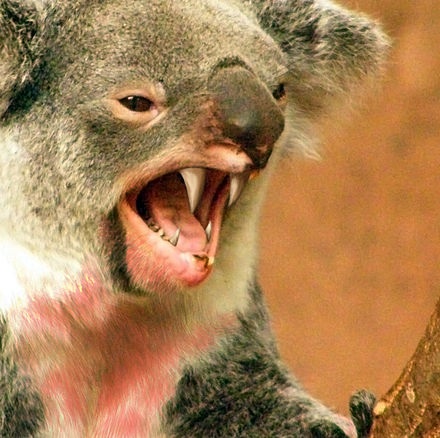
Sep 9, 2014 07:49:29 #
jjwright71
Loc: Lubbock,Tx
damn ,thats a nasty looking critter, wouldn't want to meet that sumbitch in the dark,HAR!
If you want to reply, then register here. Registration is free and your account is created instantly, so you can post right away.

